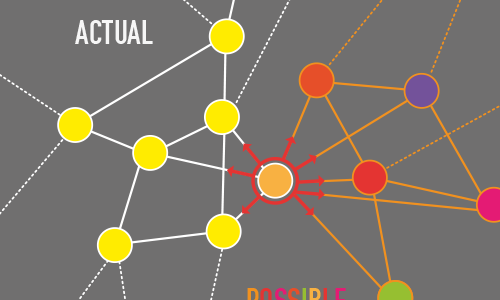by Francesca Tria
Abstract: Recently, large databases witnessing human activities allowed the observation that novelties – such as the individual process of listening a song for the first time – and innovation processes – such as the fixation of new genes in a population of bacteria – share striking statistical regularities.
Theoretical results drew attention to the mechanism of expansion into the adjacent possible, originally proposed by Stuart Kauffman in the framework of biological evolution, as a very general and powerful mechanism able to explain such regularities. This translates mathematically in looking at the evolution of systems where innovation occurs, as a path in a complex space, whose structure and topology get continuously reshaped and expanded by the occurrence of the new.
I will present a general framework based on Polya’s urn able to account for many of the statistical regularity measured in the analyzed databases.
